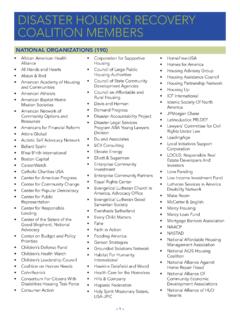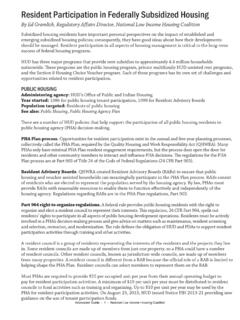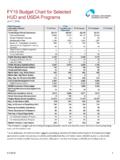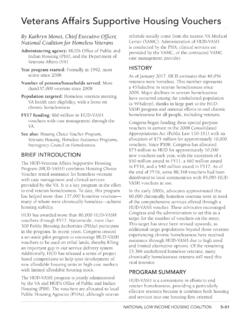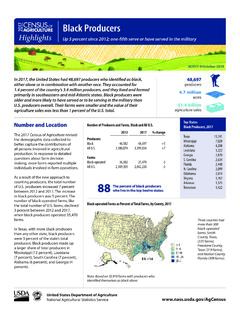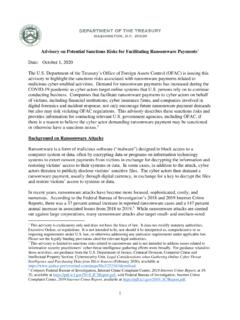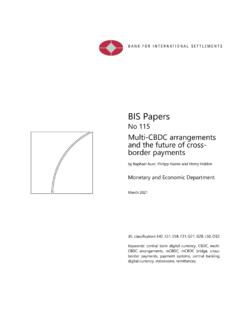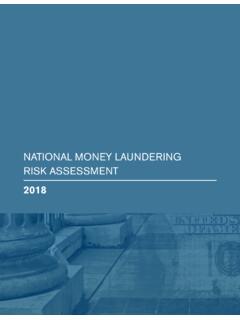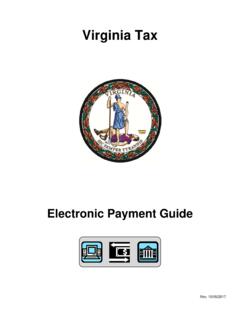Transcription of FEDERAL MORATORIUM ON EVICTIONS FOR NONPAYMENT …
1 1 FEDERAL MORATORIUM ON EVICTIONS FOR NONPAYMENT OF RENTA ugust 2021 The Centers for Disease Control and Prevention (CDC) took unprecedented action on September 1 by issuing a temporary national MORATORIUM on most EVICTIONS for NONPAYMENT of rent to help prevent the spread of coronavirus. Citing the historic threat to public health posed by coronavirus, the CDC declared that an eviction MORATORIUM would help ensure people are able to practice social distancing and comply with stay-at-home orders. The CDC issued on October 9 guidance creating new burdens for renters seeking MORATORIUM protections. While the new guidance does not rescind the MORATORIUM on most EVICTIONS for NONPAYMENT of rent, it states that landlords may challenge tenant declarations and initiate eviction proceedings at any time.
2 The new guidance undermines the intent of the CDC s order by eroding protections for renters and making it more difficult for struggling renters to remain stably housed. The CDC eviction MORATORIUM took effect September 4 and was initially set to expire on December 31. Congress extended the MORATORIUM through January 2021 and President Biden further extended it through March, June, and July and provided a total of $ billion for emergency rental assistance (ERA). The eviction MORATORIUM lapsed on July 31, but the CDC announced on August 3 a limited eviction MORATORIUM through October 3 for renters living in communities experiencing a surge in COVID-19 cases, covering an estimated 80% of all counties and 90% of all renters.
3 The CDC s announcement came one day after the Biden administration announced additional steps it will take to protect renters and prevent EVICTIONS during the pandemic, including those recommended by NLIHC and the national Housing Law DOES THE NEW CDC EVICTION MORATORIUM DIFFER FROM THE PREVIOUS ORDER? WHY IS AN EVICTION MORATORIUM STILL NECESSARY?The new eviction MORATORIUM provides immediate relief for the million renter households who are currently behind on their rent and who were at an increased risk of eviction when the previous FEDERAL eviction MORATORIUM expired on July 31. Recent research estimates that up to 80% of households behind on rent and at risk of eviction live in communities with over 100% COVID-19 case growth rates in July.
4 An extended MORATORIUM is desperately needed given the newly surging Delta variant, low vaccination rates in communities with high eviction filings, and cities and states slow rate of distributing ERA. The new MORATORIUM will help keep renters safely and stably housed, and it will provide state and local governments more time to distribute ERA to households in new MORATORIUM : Prevents renters in communities experiencing a substantial or high level of community transmission of COVID-19 from being evicted for NONPAYMENT of rent; Protects renters for up to two months, from August 3 to October 3. Renters lose protections under the MORATORIUM once their community is no longer experiencing a substantial or high level of community transmission; Requires renters to provide their landlord with a signed declaration form to be covered.
5 Renters who previously submitted declaration forms are not required to do so again; and 2 Does not relieve renters from their obligation to pay out whether your county is experiencing a substantial or high rate of transmission here: #county-viewWHY DID THE CDC ISSUE THIS ORDER? In its notice, the CDC argues coronavirus presents a historic threat to public health and eviction moratoriums can be an effective public health measure to prevent the spread of coronavirus. An eviction MORATORIUM is necessary to ensure people are able to follow best practices recommended by the CDC to cut down on coronavirus transmission, including quarantine, isolation, and social distancing. Moreover, the notice states housing stability helps protect public health because homelessness increases the likelihood of individuals moving into congregate settings, such as homeless shelters, which then puts individuals at higher risk of COVID-19.
6 CDC cites NLIHC s report Out of Reach: The High Cost of Housing and explains that the high cost of housing makes individuals who have experienced a drop in income since the onset of the pandemic particularly vulnerable to eviction. In the updated order, CDC Director Dr. Rochelle Walensky writes, the emergence of the delta variant has led to a rapid acceleration of community transmission in the United States, putting more Americans at increased risk, especially if they are unvaccinated. This MORATORIUM is the right thing to do to keep people in their homes and out of congregate settings where COVID-19 spreads. It is imperative that public health authorities act quickly to mitigate such an increase of EVICTIONS , which could increase the likelihood of new spikes in SARS-CoV-2 transmission.
7 Such mass EVICTIONS and the attendant public health consequences would be very difficult to reverse. DOES THE FEDERAL MORATORIUM STOP ALL EVICTIONS ? The new eviction MORATORIUM prevents renters in communities experiencing a substantial or high level of community transmission of COVID-19 from being evicted for NONPAYMENT of rent. Renters lose protection under the MORATORIUM once their community is no longer experiencing a substantial or high level of transmission. Since the CDC order has been challenged in court, tenants should stay tuned for updates, rather than just assuming they are protected through October all courts are interpreting the CDC order in the same way, and in a few jurisdictions, these protections may not apply.
8 Tenants should contact their local legal aid organization or community organization group to be connected to legal assistance if they are facing can still be evicted for: Conducting criminal activity on the property; Threatening the health or safety of other residents; Damaging or posing an immediate and significant risk of damage to the property; Violating applicable building codes, health ordinances, or other regulations related to health and safety; and Violating any contractual obligation other than the timely payment of rent, late fees, penalties, or interest. 3 DOES THE FEDERAL MORATORIUM BLOCK ALL STAGES OF AN EVICTION? The CDC guidance on the order states that landlords may initiate eviction proceedings at any time, but covered tenants cannot be evicted until the MORATORIUM expires on October 3, 2021.
9 However, in most states, eviction suits would still be prohibited by state law if brought before the CDC MORATORIUM expires. If sued for eviction, seek legal landlords to initiate eviction proceedings even when covered renters cannot be evicted until the MORATORIUM ends provides landlords new opportunity to intimidate tenants who are behind on rent and pressure tenants to vacate their homes sooner. EVICTIONS even a single eviction filing creates a long-term mark on a renter s record, hindering their access to future housing opportunities. Some renters avoid that mark by vacating their home before the formal eviction proceedings occur. Other renters, especially the most marginalized renters, such as immigrants, seniors, and people with disabilities, fear the court process or cannot participate in court proceedings due to accessibility AUTHORITY DOES CDC HAVE TO ISSUE THIS ORDER?
10 The order cites section 361 of the Public Health Service Act (42 USC 264 and a regulation pursuant to the Act, 42 ), which grants the Secretary of Health and Human Services broad authority to enact measures to prevent the spread of THE MORATORIUM EFFECTIVE IN MY STATE OR TERRITORY? The order applies to every county experiencing substantial or high rates of community transmission of SARS-CoV-2. See the COVID-19 Integrated County View here. DOES THE FEDERAL MORATORIUM COVER ALL FORMS OF RENTAL HOUSING? The order applies to all standard rental housing, including mobile homes or land in a mobile home park. However, it does not cover individuals renting hotels, motels, or other guest homes rented temporarily.

